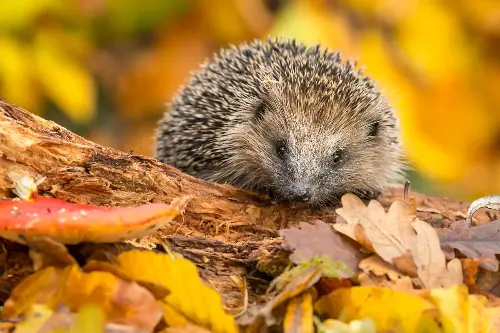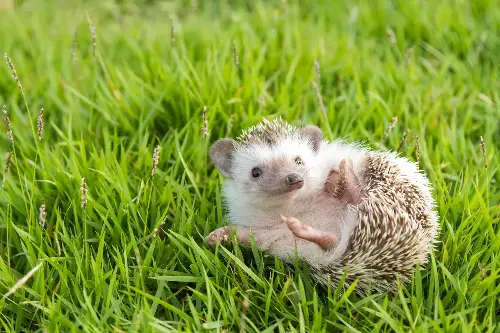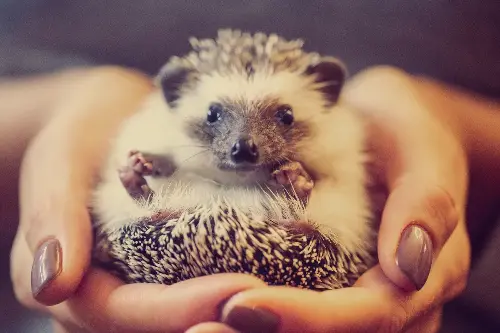Hedgehogs, with their unique spiky armour and endearing habits, have long fascinated animal enthusiasts and casual observers alike. These charming creatures, which belong to the Erinaceidae family, have much more to offer beyond their prickly exteriors. Native to parts of Europe, Asia, and Africa, and introduced to New Zealand, hedgehogs have adapted to a variety of climates and environments, making them a resilient, diverse, and captivating species.

One of the most remarkable traits of hedgehogs is their spines or quills. Unlike porcupines, hedgehog spines are not barbed and do not detach easily. These modified hairs are made of keratin, the same protein that constitutes human hair and nails. A hedgehog typically boasts between 5,000 to 7,000 spines on its back, providing an effective defence mechanism against predators. When threatened, a hedgehog will roll into a tight ball, with its spines radiating outward, making it difficult for any would-be attacker to penetrate its armour.
Hedgehogs are predominantly nocturnal creatures, spending their nights foraging for food. Their diet is varied and opportunistic; they are primarily insectivores but can also consume small mammals, birds, frogs, fruit, and even fungi. Their keen sense of smell and strong forelimbs make them excellent hunters. Interestingly, hedgehogs have a natural immunity to a variety of toxins, allowing them to consume creatures like bees and wasps without harm.
These diminutive mammals are solitary by nature, only coming together during the breeding season. Hedgehogs are ready to mate at about one year of age. The mating process can be a bit of a challenge given their spiky defences, often involving a delicate dance of manoeuvres. After mating, the female hedgehog, or sow, will raise the young alone. A typical litter consists of four to six hoglets, born blind and with soft spines that harden within days. The mother weans them at around six weeks, after which they must fend for themselves.
Hedgehogs are also known for a peculiar behaviour called self-anointing or anointing. When a hedgehog encounters a new scent or taste, it will produce frothy saliva and spread it over its spines. Scientists are still unsure about the exact purpose of this behaviour, but theories suggest it may serve as a form of camouflage, a way to make them less palatable to predators, or even have some olfactory communication function.

Despite their armour and resilience, hedgehogs face numerous threats in the wild. Habitat destruction, pesticides, and road traffic pose significant risks. In the UK alone, their population has declined dramatically in recent decades, prompting various conservation efforts. Organisations like the British Hedgehog Preservation Society work tirelessly to raise awareness, promote hedgehog-friendly gardening practices, and lobby for safer road designs.
For those keen on fostering a hedgehog-friendly environment, there are several steps one can take. Creating hedgehog highways by cutting small holes in garden fences allows these creatures to roam freely in search of food and mates. Leaving out shallow dishes of water and offering hedgehog food—available at many pet stores—can provide them with essential resources. Avoiding the use of slug pellets and insecticides helps preserve their natural food supply and prevents poisoning. Additionally, setting up log piles or building hedgehog houses offers them safe, dry places to nest and hibernate.
Hedgehogs enter a state of hibernation in response to cold weather, typically from October to April. During this time, their metabolic rate drops significantly, conserving energy as they live off-body fat accumulated during warmer months. It's a vulnerable period, and disturbances can be fatal. Gardeners are encouraged to check for hedgehogs before conducting winter work, such as bonfires or heavy digging.

In addition to their charm in the wild, hedgehogs have found their way into human homes as pets, particularly the African pygmy hedgehog. Unlike their wild counterparts, these domesticated hedgehogs require controlled environments, including appropriate heating, a balanced diet, and regular vet check-ups. It's important for potential owners to research thoroughly to ensure they provide the best care for these specialised pets.
Hedgehogs have also made their mark in folklore and culture. In many traditions, they are seen as symbols of protection and intelligence. European folklore often depicts them as wise and cunning animals, capable of outsmarting larger foes. Literary references range from Shakespeare’s subtle nods to modern children’s books like Beatrix Potter's “The Tale of Mrs. Tiggy-Winkle,” cementing their endearing status in our cultural consciousness.
In conclusion, hedgehogs are far more than just their spiky exterior. Their unique behaviours, ecological roles, and interactions with humans make them fascinating subjects of study and admiration. Whether encountered in the wild or cared for as pets, these small mammals offer a delightful glimpse into the diversity and resilience of nature. By understanding and protecting hedgehogs, we ensure that future generations can continue to enjoy their charms.
